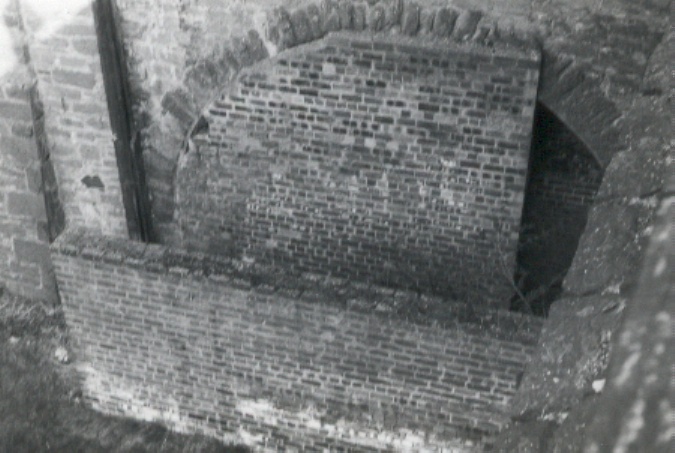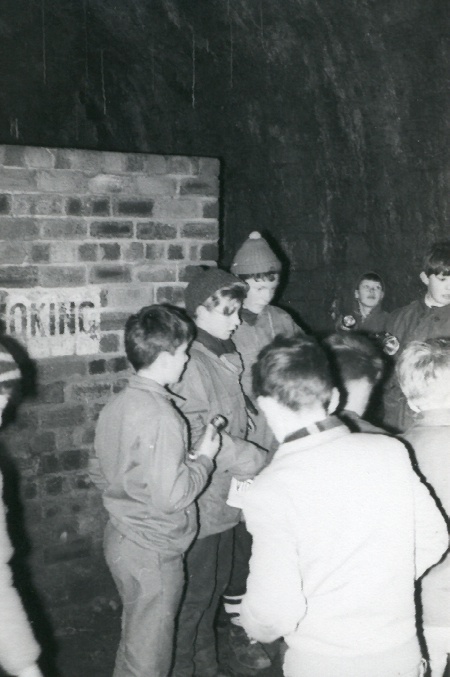
The south end of the tunnel from the outside - -

- - and on the inside
There was a level area in front of the south entrance to the tunnel which, in the 1960s, was occupied by tennis courts. This was the site of stationary engine and a series of sidings at the top of the incline. The 1833 Journal of Agriculture states that "The steam-engine at the Dundee inclined plane is a high-pressure one of 20 horse power, made by Messrs Maudesly & Co. London. A telegraphic board is placed at the bottom of each inclined plane, to announce to the engineer at the engine that the waggons or carriages are ready to be hauled up; and in thick weather a large bell is rung. A lantern could be used at night, but it is thought inexpedient to use the railway after night-fall for the present."
 The south end of the tunnel from the outside - - |
 - - and on the inside |
One of my earliest memories is of being lifted to look over the wall at the top of Upper Constitution Street. To the left were some tennis courts and tucked in the corner on the right was this entrance to the tunnel. It was not bricked up - these were blast walls which were built when it became an air raid shelter in WW II. The "no smoking" sign on the wall inside dates back to this use of the tunnel.
The quote below, from "This Dangerous Menace: Dundee and the River Tay at War, 1939 to 1945" by Andrew Jeffrey, is on the Dundee-History Yahoo! Groups site - according to www.Amazon.co.uk the book is out of print but my son was able to track down a second hand copy for me on E-Bay.
"At the outbreak of WWII the emergency Committee asked the LMS Railway Company for the use of the Law tunnel as a shelter. This was greed to at a rent of one pound per annum, provided the Corporation undertook to return the tunnel to the condition in which they found it ( whatever that was!!) In Feb 1941 Ellen Wilkins (Minister at the Home Office) noted that the Law Tunnel had no amenities and described it as one of the wettest shelters she had ever seen. In addition it was very cold and was never a success. Plans for a grid square of tunnels westward of the present tunnel with exits to Kinghorn Road were quietly dropped."
I had heard that the staff of the Royal Infirmary stored their radon supplies here during the war - I presume that this also was during WW II, if I'm correct in remembering that radon started to be used in the treatment of cancer in the 1920s.
Please feel free to contact me by e-mail at elliottsimpson@hotmail.com
May 2019